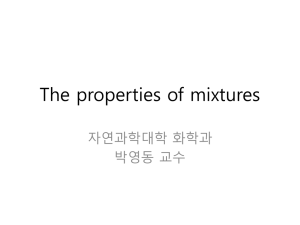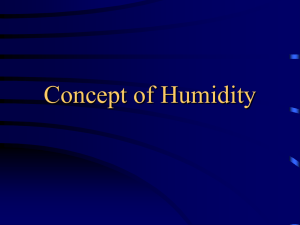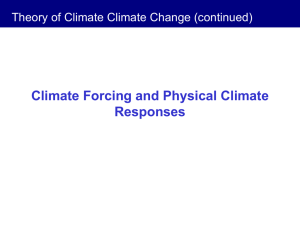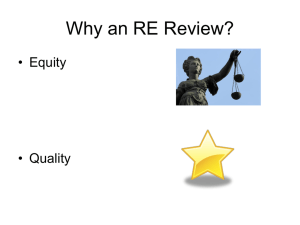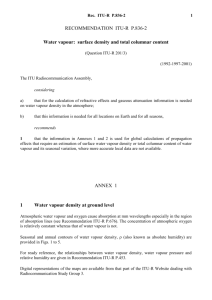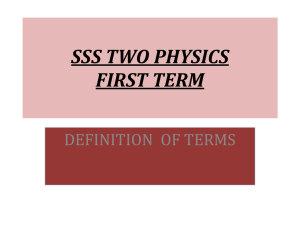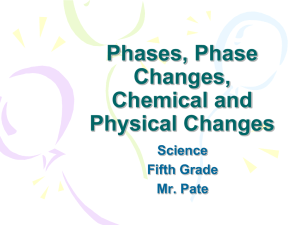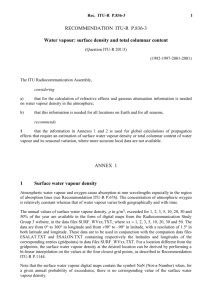Lecture#1 - WordPress.com
advertisement
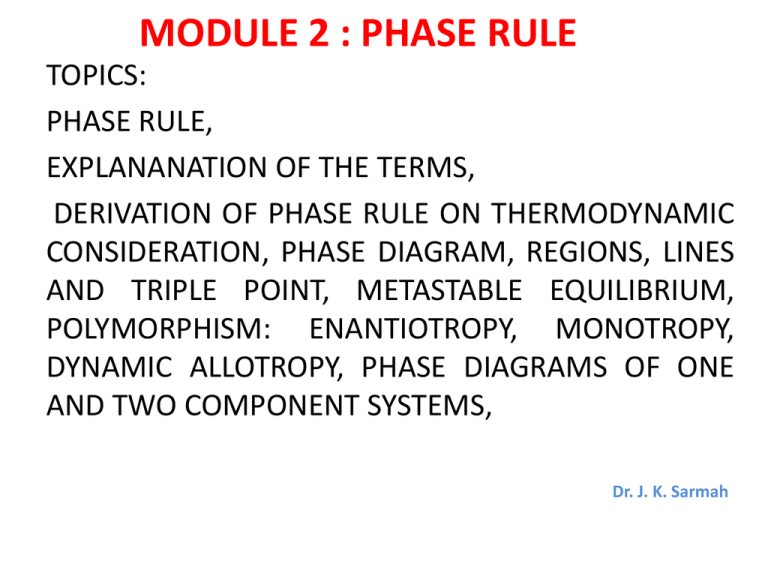
MODULE 2 : PHASE RULE TOPICS: PHASE RULE, EXPLANANATION OF THE TERMS, DERIVATION OF PHASE RULE ON THERMODYNAMIC CONSIDERATION, PHASE DIAGRAM, REGIONS, LINES AND TRIPLE POINT, METASTABLE EQUILIBRIUM, POLYMORPHISM: ENANTIOTROPY, MONOTROPY, DYNAMIC ALLOTROPY, PHASE DIAGRAMS OF ONE AND TWO COMPONENT SYSTEMS, Dr. J. K. Sarmah WHAT IS A PHASE? • • • • • • ICE LIQUID WATER WATER VAPOUR ICE AND LIQUID WATER LIQUID WATER AND WATER VAPOUR ICE AND WATER VAPOUR – HOW MANY PHASES IN EACH? CHANGE OF PHASE • • • • • • SOLID TO LIQUID LIQUID TO SOLID LIQUID TO VAPOUR VAPOUR TO LIQUID VAPOUR TO SOLID SOLID TO VAPOUR = = = = = = CHANGE OF PHASE • • • • • • SOLID TO LIQUID LIQUID TO SOLID LIQUID TO VAPOUR VAPOUR TO LIQUID VAPOUR TO SOLID SOLID TO VAPOUR = MELTING/FUSION = FREEZING = VAPORISATION = CONDENSATION = DEPOSITION = SUBLIMATION CHANGE OF PHASE DEFINITIONS • Sublimation is the process of transformation directly from the solid phase to the gaseous phase without passing through an intermediate liquid phase. • Sublimation is an endothermic (REQUIRES ADDITIONAL ENERGY) phase transition that occurs at temperatures and pressures below a substance's triple point in its phase diagram. SELF STUDY: DEFINITIONS WITH EXAMPLES PHASE EQUILLIBRIA • DEALS WITH THE STUDY OF EQUILLIBRIUM CONDITIONS OF HETEROGENEOUS SYSTEMS. • WILLIARD GIBBS, AN AMERICAN PHYSICIST IN 1874, FIRST DISCOVERED A RELATIONSHIP GOVERNING ALL HETEROGENEOUS EQUILLIBRIA, THE GIBB’S PHASE RULE, • WITH THE APPLICATION OF PHASE RULE IT IS POSSIBLE TO PREDICT QUALITATIVELY BY MEANS OF A DIAGRAM THE EFFECT OF CHANGING PRESSURE, TEMPERATURE AND CONCENTRATION ON A HETEROGENEOUS SYSTEM IN EQUILLIBRIUM. PHASE RULE • IN EVERY HETERGENEOUS SYSTEM AT EQBM THE SUM OF NO. OF PHASES AND DEGREES OF FREEDOM IS GREATER THAN THE NO. OF COMPONENTS BY TWO: F=C-P+2 • F = Degrees of freedom = variance Number of intensive variables that can be changed independently without disturbing the number of phases in equilibrium • P = Number of Phases gas, homogeneous liquid phases, homogeneous solid phases • C = Components Minimum number of independent constituents Example 1: methanol and water ---- 2 components EXPLANATION: • Phase: • A phase is defined as any homogeneous and physically distinct part of a system having all physical and chemical properties the same throughout the system. A system may consist of one phase or more than one phase. • E.g. A system containing only liquid water is one-phase system • A system containing liquid water and water vapour (gas) is a two phase system • A system containing liquid water, water vapour and solid ice is a three phase system. • Pure substances (solid, liquid, or gas) made of one chemical species only, is considered as one phase, thus, oxygen, benzene, and ice are all one phase. EXPLANATION • Mixture of gases of oxygen and nitrogen which mix freely is …….. phase system, two completely miscible liquids, water and ethanol is ……. phase system, An aqueous solution of solid NaCl or a sugar solution is …….. phase system. • A mixture of two immiscible liquids forms two separate layers on standing e.g. CHCl3 and water is a …… phase system. • Calcium carbonate decomposes on heating in a closed chamber to form solid calcium oxide and carbon di oxide(gas). It is ……. phase system. EXPLANATION • Component: • The term component is defined as the least number of independent chemical constituents in terms of which the composition of every phase can be expressed by means of a chemical equation. E.g. • Water system has three phases, ice, water and water vapour and the composition of all these phases is expressed in terms of one chemical individual water. Thus water system has one component only. • Similarly Sulphur system has four phases: rhombic sulphur, monoclinic sulphur liquid sulphur and sulphur vapour and the composition of all these phases is expressed by one chemical individual sulphur. Therefore Sulphur system is one component system. • Thus, all the phases in one component system is expressed by only one chemical individual. EXPLANATION • Similarly, a mixture of gases viz. oxygen and nitrogen are miscible freely and form one phase only but its composition can be expressed by two chemical substances O2 and N2. Hence a mixture of O2 and N2 is ……… component system. • A solution of NaCl in water is a one phase system and its composition is expressed by both NaCl and water, hence it is a ……… component system. • A saturated solution of NaCl in contact with excess solid NaCl has two phases. The composition of both the phases can be expressed in terms of two chemical individual NaCl and water. Hence a saturated solution of NaCl in water in contact with excess solid NaCl is a two component system. DECOMPOSITION OF CALCIUM CARBONATE • CaCO3(s)= CaO(s) + CO2(g) • It has three phases but the composition of the system can be expressed in terms of two of the three chemical substances in equilibrium. Hence it is a two component system • Dissociation of NH4Cl: NH4Cl(s) = NH3 (g) + HCl (g) • Ammonium chloride when heated in a closed vessel dissociates into ammonia and HCl gas. The system consists of two phases solid NH4Cl and gaseous mixture containing NH3 and HCl However the constituents of the mixture are in the same proportion in which they are combined in solid NH4Cl. The composition of the both the phases therefore be expressed in terms of the same chemical individual NH4Cl. Thus the dissociation of NH4Cl is one component system. DEGREES OF FREEDOM(F) • It is defined as the least number of variable factors of a system which must be specified so that the remaining variables are fixed automatically and the system is completely defined. E.g. • For a pure gas, PV=RT, if P and T values are specified there can have be only one definite value of V or that the volume is fixed automatically. Thus it has two degrees of freedom. THE SYSTEM IS BIVARIANT • A mixture of two or more gases is completely defined only when P, T and Composition are specified. If P and T be specified the third variable i.e. composition may be varied. Since it is necessary to specify three variables to define the system completely, it has three degrees of freedom. THE SYSTEM IS TRIVARIANT DISCUSSION • • • • FOR A PURE GAS DEGREES OF FREEDOM, F = 2 ? FOR A MIXTURE OF GASES, F = 3? FOR WATER = WATER VAPOUR, F = 1? FOR ICE = WATER = VAPOUR SYSTEM, F = 0? DISCUSSION • For Water = Water Vapour system, F=1, The system has two variables, P and T. At definite T, the vapour pressure of water can have only one fixed value. Thus if one variable is specified , the other is fixed automatically. Hence this system has one degree of freedom. • For ice, water, water vapour system, F=0, In this system, the three phases coexist at the freezing point of water. Since the freezing temperature of water has a definite value, the vapour pressure of water has also a fixed value. Since both the variables are already fixed, the system is defined automatically and there being no need to specify any variable. Hence this system has no degree of freedom. NONVARIANT SYSTEM. DISCUSSION • HOW MANY PHASES ARE PRESENT IN EACH OF THE FOLLOWING SYSTEMS? • A PIECE OF MOLTEN ICE PLACED IN A BEAKER COVERED WITH A WATCH GLASS • MIXTURE OF N2, H2 AND O2. • WATER = WATER VAPOUR, • KCl + WATER = KCl HYDRATE DISCUSSION • HOW MANY COMPONENTS ARE PRESENT IN THE FOLLOWING SYSTEM? • WATER = WATER VAPOUR, • KCl + WATER = KCl HYDRATE • FOR ICE = WATER = VAPOUR SYSTEM • A SOLUTION OF COMMON SALT • DISSOCIATION OF NH4Cl • DECOMPOSITION OF CALCIUM CARBONATE END OF LECTURE#1 • LECTURE #2 • PHASE DIAGRAM • APPLICATION OF PHASE RULE TO ONE COMPONENT SYSTEM
